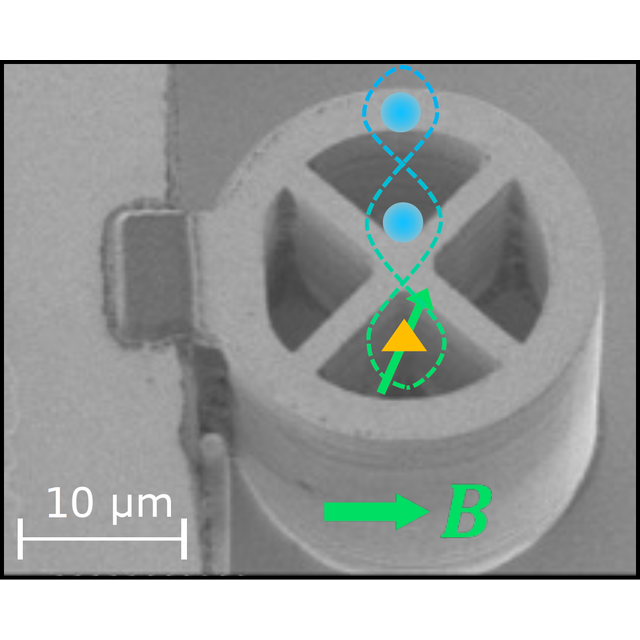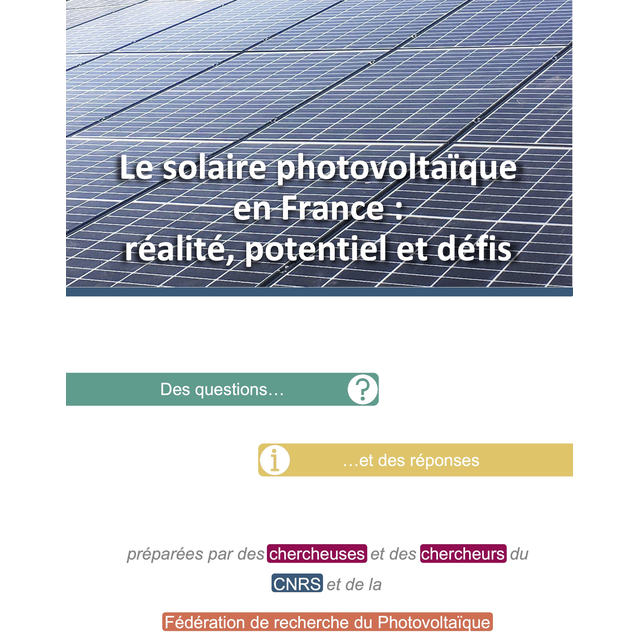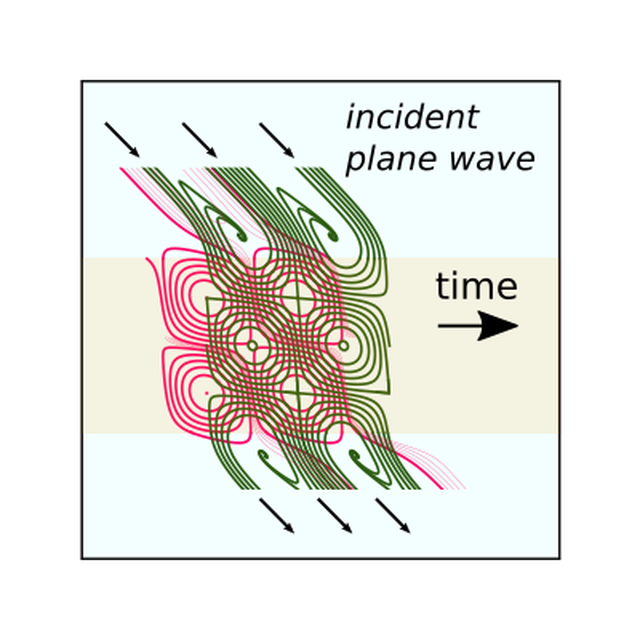The ability to generate many entangled photons in so-called « cluster states » is a key challenge for optical quantum technologies, with applications in quantum computing, networks and sensing. A team of researchers in C2N, in collaboration with academic (Institut Néel, Grenoble and Universities of Leiden, Crete, Virginia Tech) and industrial (Quandela) partners, have demonstrated the deterministic generation of such states using a device based on a semiconductor quantum dot.
By entangling a spin embedded in the quantum dot, and the single photons emitted in a time sequence, the authors demonstrate two and three-partite entanglement with record efficiency, showing generation rates orders of magnitude higher than the previous state of the art across different technologies. This is also the first time, all platforms considered, that such high efficiency is combined with photon indistinguishability — a crucial feature for scaling toward 3D cluster states for fault tolerant quantum computing.
The implemented protocol permits to convert one of the most efficient single-photon generators into an entangled-photons weaving machine at the microscopic scale.
Reference
High-rate entanglement between a semiconductor spin and indistinguishable photons
N. Coste1, D. A. Fioretto1, N. Belabas1, S. C. Wein2,3, P. Hilaire2,4, R. Frantzeskakis5, M. Gundin1, B. Goes3, N. Somaschi2, M. Morassi1, A. Lemaître1, I. Sagnes1, A. Harouri1, S. E. Economou6, A. Auffeves3, O. Krebs1, L. Lanco1,7 & P. Senellart1
Nature Photonics (2023)
DOI : https://doi.org/10.1038/s41566-023-01186-0
Affiliations
1 Centre de Nanosciences et de Nanotechnologies, Université Paris-Saclay, Palaiseau, France.
2 Quandela, Massy, France.
3 Institut Néel, Université Grenoble Alpes, Grenoble, France.
4 Huygens-Kamerlingh Onnes Laboratory, Leiden University, Leiden, The Netherlands.
5 Department of Physics, University of Crete, Heraklion, Greece.
6 Department of Physics, Virginia Tech, Blacksburg, VA, USA.
7 Centre de Nanosciences et de Nanotechnologies, Université Paris Cité, Palaiseau, France.
Contact C2N : Pascale Senellart
Figure: The semiconductor device. A quantum dot (represented by a yellow triangle in the picture) is embedded in the center of the micropillar structure. In the experiment, by precisely timing excitation pulses to the free precession of a single electron spin (green arrow) in the quantum dot around a magnetic field (B), the team demonstrated entanglement between the spin and two successively emitted photons (blue dots).








